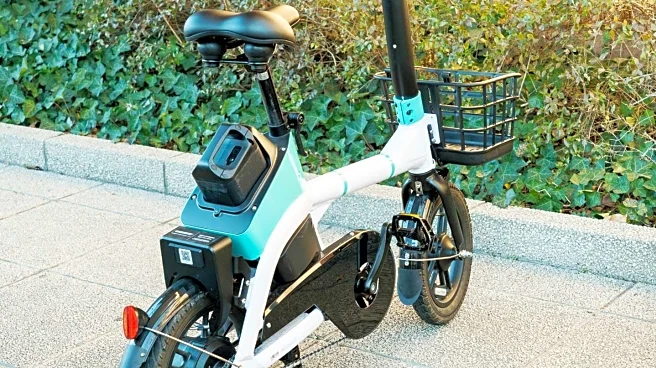What's Happening?
Consumer Reports has provided insights into the growing popularity of electric bikes (e-bikes) and what potential buyers should consider before purchasing one. E-bikes are increasingly seen as a versatile option for various lifestyles, offering features such as horns, whistles, turn signals, and extra cargo space. Rich Handel from Consumer Reports notes that e-bikes are often purchased for two main reasons: to assist with biking over hills or for commuting as a vehicle replacement. There are two primary types of e-bikes: pedal-assist bikes, which activate an electric motor when pedaling, and throttle bikes, which can move without pedaling. While e-bikes can be found for a few hundred dollars, top-performing models typically range from $2,000 to $3,000. Consumer Reports evaluates e-bikes based on battery life, acceleration, hill-climbing ability, speed control, and braking performance. For commuting, models like the Heybike Cityrun and Lectric XPedition are recommended, while the Raleigh Retroglide Royale 2.0 is suggested for recreational biking.
Why It's Important?
The increasing popularity of e-bikes reflects a shift in transportation preferences, potentially impacting urban mobility and environmental sustainability. E-bikes offer a practical alternative to traditional vehicles, reducing reliance on fossil fuels and contributing to lower emissions. This trend could influence public policy and infrastructure development, as cities may need to accommodate the growing number of e-bike users with dedicated lanes and parking solutions. Consumers stand to benefit from the convenience and cost savings associated with e-bikes, particularly in urban areas where traffic congestion is a concern. However, the high cost of top-performing models may limit accessibility for some individuals, highlighting the need for affordable options.
What's Next?
As e-bike popularity continues to rise, manufacturers may focus on enhancing battery technology and expanding features to meet consumer demands. This could lead to increased competition in the market, driving innovation and potentially lowering prices. Cities might consider investing in infrastructure to support e-bike usage, such as bike lanes and charging stations. Additionally, safety regulations and standards may evolve to address the unique challenges posed by e-bikes, ensuring rider safety and minimizing accidents.
Beyond the Headlines
The adoption of e-bikes could have broader implications for urban planning and environmental policy. As more people opt for e-bikes, there may be a cultural shift towards sustainable transportation, influencing societal attitudes towards personal mobility. This trend could also spur advancements in battery technology, benefiting other sectors such as renewable energy and electric vehicles. Furthermore, the integration of e-bikes into daily life may encourage healthier lifestyles by promoting physical activity and reducing sedentary behavior.

